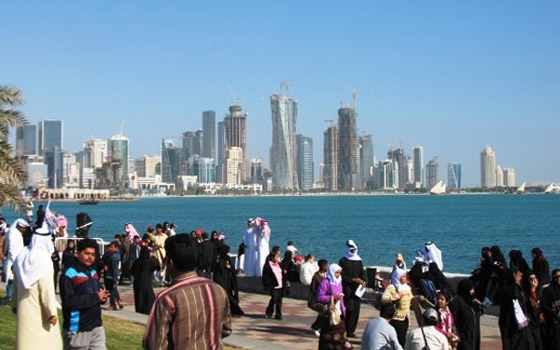Expatriates accounted for 94% of the country's total labor force of 1.3mn in 2012, shows a new report.
This, according to QNB, is mainly due to the large requirements in the construction sector, which is also the largest employing sector in the country.
The private sector currently accounts for 74% of the total jobs in the market, with expatriates taking up the vast majority of available positions.
In common with other GCC countries, the Qatari workforce is heavily skewed towards the public sector, with 84% of working nationals taking up jobs in the public sector.
Qataris prefer public sector jobs due to the higher pay packages and benefits.
Public sector pay increases implemented by the government in 2011 have made it even more difficult for the private sector to attract the nationals.
The NDS 2011-16 aims to increase the proportion of Qataris in the private sector workforce to 15% by 2016.
"Good progress has already been made in this regard with the proportion of Qatari workers in the private sector going up from 6.8% in 2008 to an estimated 8.5% in 2012. The NDS 2011-16 proposes to further increase the Qatari participation through the employment of women, encouraging entrepreneurship and matching pay scales," QNB said in its Qatar Economic Insight 2013.
Population growth: Qatar's population growth will remain strong with higher infrastructure spending, QNB said.
The report showed Qatar had the second fastest growing population rate in the world from 2008-12 at 4.3%, after Bahrain.
Qatar's population grew by 3.4% in 2012 to reach 1.8mn.
Population growth in recent years has been driven by huge investments in the gas and related sectors, which has led to rapid economic growth and a large inflow of expatriate workers.
The expatriate population accounted for 86% of the total in 2012 and increased by 6.5% from 2008-12. Qataris were estimated at around 265,000 as of 2012-end.
The inflow of expatriates, especially unaccompanied men in the construction and services sector, has led to a gender imbalance in the population.
Males accounted for 74% of the overall population in December, 2012.
The population is concentrated in and around Doha and Al Rayyan municipality.
QNB forecasts population growth to remain fairly strong at 6.7% in 2013-14 as government expenditure on infrastructure projects gathers pace.
"The upcoming projects are expected to be labor intensive and will require additional construction workers. The economic diversification strategy will also see the inflow of professional workers in other sectors of the economy in the coming years," it said.
Gulf Times
29 May























































